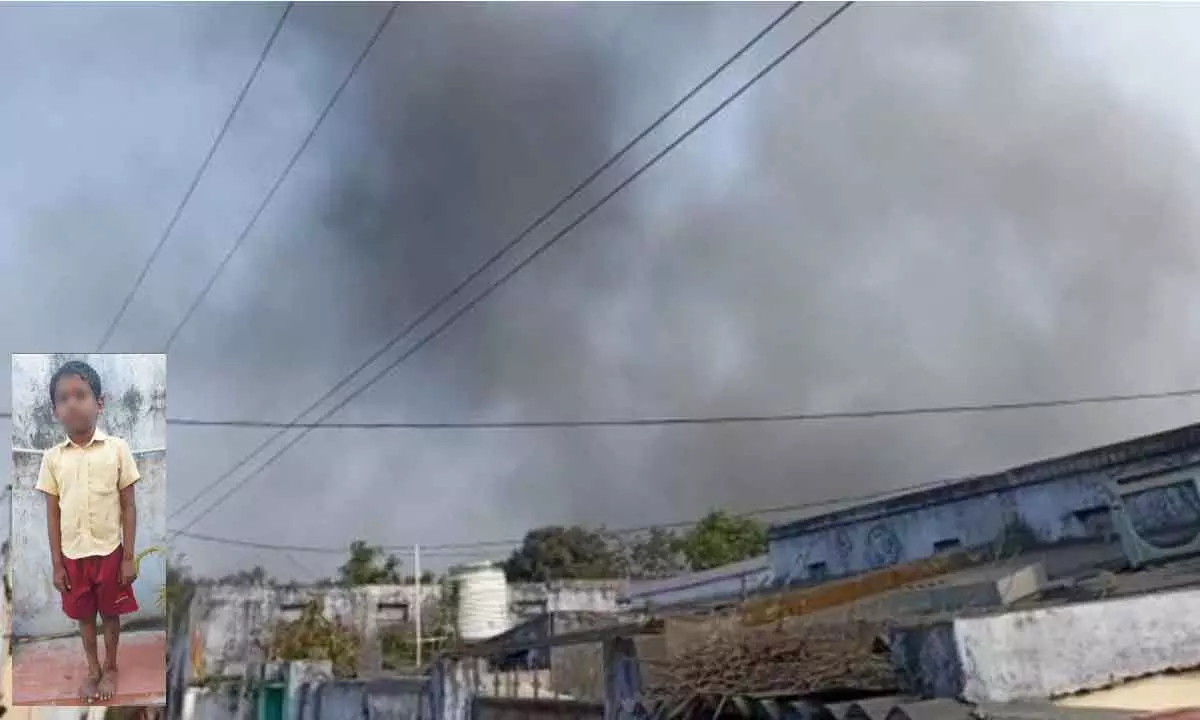Ramagundam in grip of grave industrial pollution

- Industries and opencast mines spread over Peddapalli, Mancherial, Mandamarri and Bellampalli
- Over 13 industries surround Ramagundam town
Godavarikhani (Peddapalli): Respiratory and dermatological diseases are on the rise in the Ramagundam industrial area due to pollution from industrial waste, release of toxic chemicals into air, high concentration of sulphur dioxide and sulfuric acid in water bodies.
The Ramagundam industrial area in Peddapalli district is home to many industries. Within 30 km of Ramagundam town, there are around 13 industries, including opencast mines spread over Peddapalli, Mancherial, Mandamarri and Bellampalli. The Kesoram Cement Factory at Basanta Nagar, NTPC, Singareni Thermal Power Plant and Ramagundam Fertilizer Factory located in Ramagundam emit smoke and dust which affects the air quality, according to environmental activists.
Talking to Hans India, environmental activist D Umamaheswara Rao said the NTPC thermal power plant at Ramagundam generates 2,600 MW of electricity by burning 40,000 tonnes of coal per day. It contains 35 percent carbon, 45 percent ash, 15 percent volatile matter and 5 to 10 percent moisture.
About 15 percent of this volatile content is sulphur dioxide. It converts to sulfuric acid when combined with moisture in the air. It is extremely dangerous. It can have severe effects on the heart, lungs and kidneys causing tuberculosis and pneumonia, Umamaheswara Rao explained
Coal burning produces ash and it is dumped in the Ramagundam pond near NTPC. In addition, the ash water from the factory is discharged and stored at nearby Kundanapally.
Opencast mines in the Singareni industrial area also add to pollution as vehicles transporting coal move in large numbers emitting smoke. According to international standards, a typical 35-unit AQI (air quality standard) is a must. In India, the government says it could be up to 75 units AQI in our country.
"It is learnt that the Ramagundam industrial area has an AQI anywhere from 90 to 170 units. In addition to air pollution, the industries and factories release untreated effluent into river Godavari," said Umamaheswara Rao.
The ash water enters the Ramagundam pond through NTPC and from there it flows into the Godavari river through a canal near Lingapuram. Untreated water flows directly into the Janagama Pond and Sundilla Pond and from there into Godavari.
Contaminated water from RFCL is being discharged directly into Godavari through the Malkapur Pond through the drainage next to the Godavarikhani Rajesh Theatre. Many people in Kundana Palli village are suffering from skin and gastrointestinal diseases besides huge decline in aquatic life in Godavari.
Umamaheswara Rao demanded that the government take steps for protecting the environment. "Since industries were not complying with pollution norms, a petition has been filed in the court against the NTPC thermal power plant. We will also move the court on the contamination caused by opencast mines," he said.
Another activist Maddela Dinesh of Godavarikhani said another case regarding destruction in Godavarikhani due to blasting was in the High Court and final hearing would be held on March 23.














